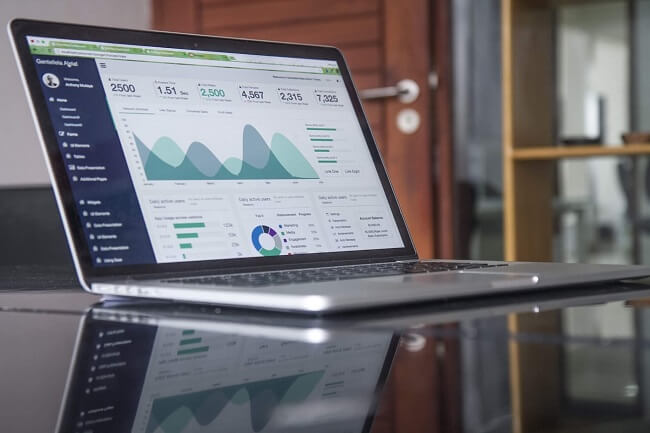Cookieless advertising has long been anticipated, and towards the second half of 2021, the reality of this become all the clearer. With the world making the move to digital and online users becoming more aware of their data privacy rights, a cookieless future makes sense.
The end of third party cookies is here, and it’s set to reimagine advertising in the healthcare industry.
What does cookieless mean?
If you’ve ever visited a healthcare website, well let me rephrase that, when you visit any website including a healthcare website, you’ve more often than not seen a pop up asking you to accept third party cookies. Generally, you click accept and move on with your life. Not really thinking about what you’re agreeing to, but hey, it’s never really done anything so what’s the problem?
Now, you’re seeing headlines about cookies disappearing, it’s suddenly a wakeup call. What is this mysterious thing that you were accepting, and how does its disappearance factor into your online experience?
This begs the question “What does Cookieless mean for advertising?”, and we’ll tell you why. Let’s start by looking at what cookies are. In simple terms, cookies are tiny pieces of code that are added to your browser whenever you visit a website. They will contain details such as the name of the site as well as your user ID.
They can also track and store data such as your language preference, website configuration, login information and the products that have been added to your cart.
There are two main types of cookies:
- First party cookies are when the website you are on uses cookies to track you directly. They receive first-hand information.
- Third party cookies are when websites insert their cookies into other websites using a unique script to track your behaviors and deliver targeted ads based on the information observed.

Why are browsers going cookieless?
As our definition of cookies suggests, this tool aims to track user behavior. The phrase “Big brother is watching you” very quickly comes to mind. In the same breath, there has also been a few major developments when it comes to privacy protection in the digital era. Customers no longer want to have their every move monitored, not to mention looking for ways to ensure that their data is safe and secure.
There has been mounting pressures on marketers and online platforms to focus their efforts on protecting people’s personally identifiable information (PII). In addition to this, laws around the globe are changing to ensure the protection of this information, one of the most influential being General Data Protection Regulation (GDPR).
Leading internet browsers like Google Chrome, Firefox and Safari have already made the movement towards a cookieless future. While Google is the more recent addition to this change, Firefox and Safari have been leading the way for the last decade or so.
This has led to the death of cookies and is forcing healthcare marketers to start looking into how to prepare for cookieless future. Cookieless targeting and cookieless tracking need to be developed to counteract the demise of the third-party cookies that marketers have been relying on for so many years.
How Cookieless impacts healthcare advertising
Now, the question on everyone’s lips is “How do you prepare for a Cookieless world?” and to address this, we first need to look at how the cookieless movement will impact healthcare advertising.
The cookieless future impact on healthcare marketing is monumental. The first thing you need to realize is that there are two forms of behavior tracking available when it comes to monitoring online users – authenticated and anonymous tracking. Due to users being hesitant about sharing their data online, authenticated data is not as available as anonymous data.
This user hesitancy and move to first-party data sharing functionality means that marketing and retargeting efforts need to be reimagined. This can be difficult to do due to the lack of information available to healthcare marketers. As a result, campaigns will no longer be as accurate as they once were.
Something worth remembering is that the knowledge and data already gathered and used may continue to guide your marketing strategies. The only area that will be severely impacted is the beginning of the customer journey as there is no data to assist you in developing a customer journey that will be appealing to the person in question.
So, for example, if someone had been on a website searching diabetes and they came onto your site looking for a healthcare provider, you would have no way of knowing that. This means that instead of giving them access to the relevant information from the get-go, they will need to navigate their way through your website.
There are, of course, ways of making the journey easier on them, but this will require a lot more effort. For example, the use of online forms to help direct them and give you data to structure your interactions on.
7 Marketing tips for healthcare brands
With the move to a cookieless world a must, healthcare marketers have no choice but to restructure their approach. This will include how you go about accessing and storing data to developing your Google Ads strategy. We’ll share a few to help you get started.
1. Get creative with how you obtain user data. This could be as simple as a basic newsletter form or creating an interactive Q&A platform to help patients get the right assistance.
2. Reach out to customers and patients to see what they are really looking for. Sometimes it’s about more than comfort and support.
3. A/B testing your ads is an important tool in determining what works and what doesn’t. Don’t be afraid to try different options, you never know what will end up working.
4. Give your ads more context, tell a story. People are always looking for a human connection and finding ways to showcase your healthcare brand from this light is important.
5. Call tracking is a great tool when it comes to extracting important data from voice calls that come through to your office or practice. The right system will identify certain keywords and store data in an easily accessible manner.
6. Google’s Sandbox should become your best friend. It’s a space for sharing data with other businesses while respecting the privacy of the individuals involved.
7. Use your existing data to shape new strategies, and let the outcomes thereof be used to shape upcoming strategies. It’s a constant cycle of learning.
It’s not the end of advertising. It’s merely a step ahead.
Many marketers are feeling disheartened by the move to a cookieless future when the truth is, they should be excited about the prospect of rethinking their strategies to deliver even more impressive results within the healthcare space. Marketing isn’t changing, however, the way in which we’re able to access information has.
If you’re yet to embrace the cookieless future, send us an email and one of our team members will be in touch to help you future-proof your healthcare marketing strategy.





Tell us your thoughts in the comments